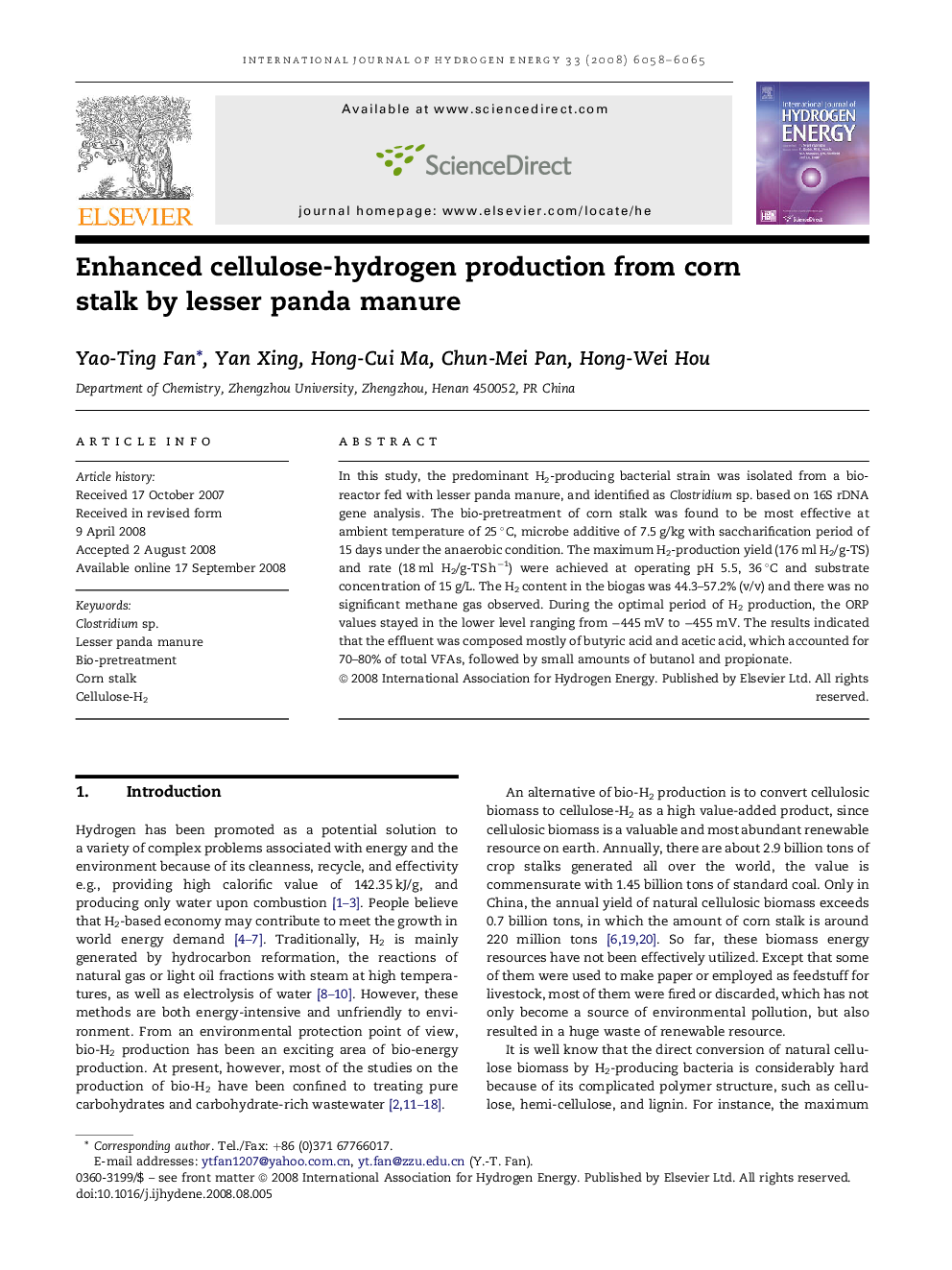| Article ID | Journal | Published Year | Pages | File Type |
|---|---|---|---|---|
| 1283604 | International Journal of Hydrogen Energy | 2008 | 8 Pages |
In this study, the predominant H2-producing bacterial strain was isolated from a bio-reactor fed with lesser panda manure, and identified as Clostridium sp. based on 16S rDNA gene analysis. The bio-pretreatment of corn stalk was found to be most effective at ambient temperature of 25 °C, microbe additive of 7.5 g/kg with saccharification period of 15 days under the anaerobic condition. The maximum H2-production yield (176 ml H2/g-TS) and rate (18 ml H2/g-TS h−1) were achieved at operating pH 5.5, 36 °C and substrate concentration of 15 g/L. The H2 content in the biogas was 44.3–57.2% (v/v) and there was no significant methane gas observed. During the optimal period of H2 production, the ORP values stayed in the lower level ranging from −445 mV to −455 mV. The results indicated that the effluent was composed mostly of butyric acid and acetic acid, which accounted for 70–80% of total VFAs, followed by small amounts of butanol and propionate.
